I often refer to the metaphor of: ‘Drinking from the fire hydrant ‘to describe what it feels like trying to keep up with the wave of material that hits our email in boxes. And if like me you have 4 mail accounts (for different businesses and pro bono activities) you will know the challenge. In the past filtering of content was handled by the manual clippings service which collated material and grouped it according to a set of predefined topics.
Today much of that is automated but you still end up skimming and relying on trusted sources. I find less is more and prefer thought pieces from organisations such as the McKinsey Quarterly and Strategy & Business (formerly a Booz and Company publication now part of PWC).
meetings are the factory floor for knowledge workers
This week’s thought leadership interview by Theodore Kinni in Strategy & Business about meetings caught my eye. Based on a book Let’s Stop Meeting Like This: Tools to Save Time and Get More Done by Dick and Emily Axelrod, a couple of quotes hit home:
S+B: Why should executives be concerned about meeting effectiveness?
DICK AXELROD: Meetings are the factory floor for knowledge workers.They are where a lot of work gets done—or should get done—these days. Organizations are getting more complex, and making them work requires people to meet. Meetings are also artifacts of the organizational culture. If you change the way you meet, you can begin to change your culture. And meetings are huge engagement opportunities. They are where people decide whether they’re going to sit on their hands or they’re going to put their wholehearted self behind whatever needs to be done.AND
…..These five factors—purpose, challenge, autonomy, learning, and feedback—provide a way of thinking about a meeting that goes beyond the agenda and mechanics, like how you set up the room. If you can embed them in your meetings, you should have good ones.
S+B: How do you embed them?
DICK AXELROD: We use something we call the “meeting canoe” for that. It’s a six-stage process that represents the order, shape, and flow of the meeting experience. First, you welcome people and connect them to one another and the task. Then, you help them discover the way things are, and elicit their dreams about what could be. Next, you help them come to a decision about what should be done and ensure that everyone is clear about the decisions reached and who is going to do what. Finally, you attend to the end by reviewing the decisions reached, identifying next steps, and reviewing how you worked together.
choose which meeting you attend
This all struck me as being true! We are all looking for ways of making meetings more effective and the idea of making them voluntary (you have to see value and want to attend) is one that plays very well with Open Space Meetings – A method of running meetings – the agenda is decided on the day by participants and there are five main rules during the mini-breakout sessions:
- Whoever comes are the right people: this alerts the participants that attendees of a session class as “right” simply because they care to attend
- Whatever happens is the only thing that could have: this tells the attendees to pay attention to events of the moment, instead of worrying about what could possibly happen
- Whenever it starts is the right time: clarifies the lack of any given schedule or structure and emphasises creativity and innovation.
- When it’s over, it’s over: encourages the participants not to waste time, but to move on to something else when the fruitful discussion ends.
- Law of Two Feet” (or “The Law of Mobility”). If at any time during our time together you find yourself in any situation where you are neither learning nor contributing, use your two feet. Go to some other place where you may learn and contribute.
You need special people and a confident organisation to run Open Space Meetings. Most people need an agenda published in advance in order to decide whether to attend. In many of the cultures I work with such a session would be viewed as frivolous at best.
What I have observed, and why I was drawn to many of the assertions made by Dick and Emily, is that set up and space are so important. Its a core theme in Masterclasses I run.
the right space and the right culture
 A month ago I was a guest at the official opening of dotmailer‘s new Head Office concurrent with their 15th birthday. I had the pleasure of working with them in 2005 when the founders were thinking about where to take their evolving business (then called Ellipsis Media) and Tink Taylor (Founder) has been very generous in recognising that contribution in the what others have said section of this site – I will publish a note on that in due course.
A month ago I was a guest at the official opening of dotmailer‘s new Head Office concurrent with their 15th birthday. I had the pleasure of working with them in 2005 when the founders were thinking about where to take their evolving business (then called Ellipsis Media) and Tink Taylor (Founder) has been very generous in recognising that contribution in the what others have said section of this site – I will publish a note on that in due course.
I mention the testimonial as the company I looked at then has many of the same people still working for it today. Much of that is down to the working culture and collegiate approach which their new HO building in London which overlooks the City reflects.
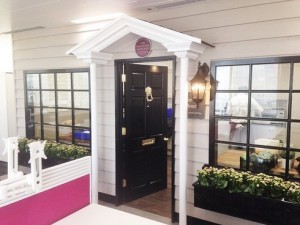 I particularly liked the use of the English style tea house (kitchen) which houses the original table from the pub in Croydon where the 3 founders first met and discussed the business.
I particularly liked the use of the English style tea house (kitchen) which houses the original table from the pub in Croydon where the 3 founders first met and discussed the business.
And the use of the bubble pods for meetings and the iPad driven coffee machine. Make the best coffee and people will meet around it, site the meeting areas close by and people will use them. dotmailer has 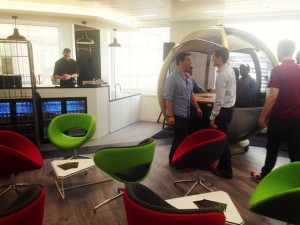 made meetings (and work) fun and its dramatic growth as a business would indicate its a formula that works.
made meetings (and work) fun and its dramatic growth as a business would indicate its a formula that works.
and finally
My title draws on three metaphors: a canoe, a pieris japonica and a conducive space. I’ve dealt with the space issue above. Here’s what Emily Axelrod said about the canoe:
EMILY AXELROD: Our graphic artist, Bob Von Elgg, came up with the canoe as a metaphor for meetings. We love the idea because a canoe requires direction and coordinated action to move through the water. And when you look at a canoe from the top, its shape is reminiscent of the meeting experience: A meeting is a conversation that starts out small in the welcome and connection stages, it reaches its widest point when you’re discovering the way things are and eliciting people’s dreams, and begins to narrow again as you decide what to do and attend to the end.
Plants, like humans, require the right environment to flourish: put a shade loving plant (or person) into the limelight for too long and they go off colour; give them the right nutrients and feed them and you will reap the benefits. Below is a Pieris Japonica I have grown from a small plant. At the start of the season I gave it too much light and put it in a draughty spot – the leaves went brown and it lost its colour. Now in a sheltered spot (out of the wind and part shade) it has had a resurgence.
Managing meetings is an art form requiring careful husbandry. Get it right and the results will be spectacular!


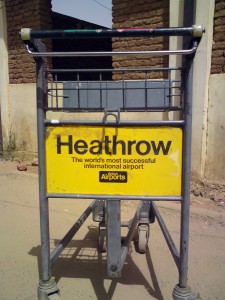
 Clarity is key, ambiguity is the enemy of progress: be clear about the terms, what they are going to get, when and in what format and what help and assistance you need from them in order to deliver it.
Clarity is key, ambiguity is the enemy of progress: be clear about the terms, what they are going to get, when and in what format and what help and assistance you need from them in order to deliver it. n acquired taste but when you are hungry they are delicious. This is a recipe with basic ingredients: a few determined people, a dash of technology (soon to be enhanced), a sprinkling of generous traders and a huge dose of imagination from the cooks who mixed ingredients.
n acquired taste but when you are hungry they are delicious. This is a recipe with basic ingredients: a few determined people, a dash of technology (soon to be enhanced), a sprinkling of generous traders and a huge dose of imagination from the cooks who mixed ingredients.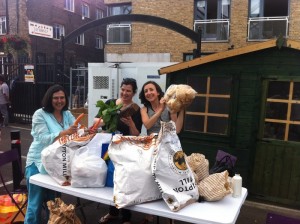
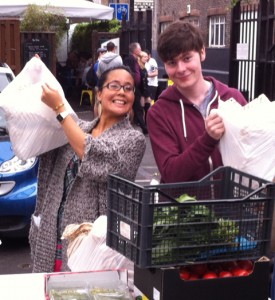 and Jaqueline from Look Ahead, came with one young person and one (very) big bag… luckily they also had money to call a taxi!
and Jaqueline from Look Ahead, came with one young person and one (very) big bag… luckily they also had money to call a taxi!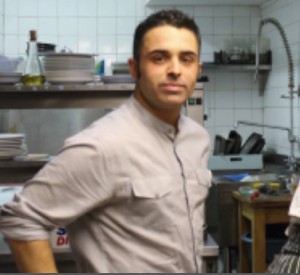 Of course the next step was to engage Ivan Cubillo – a Zheroes Volunteer, who is a professional chef and just graduated as Nutritionist, here is what he said:
Of course the next step was to engage Ivan Cubillo – a Zheroes Volunteer, who is a professional chef and just graduated as Nutritionist, here is what he said: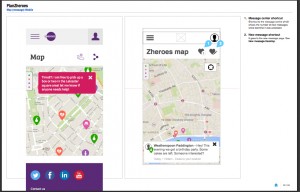
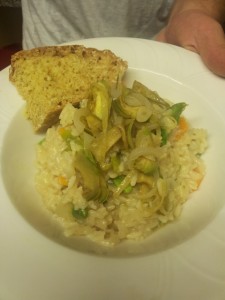
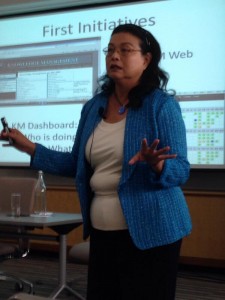
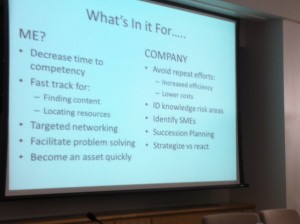
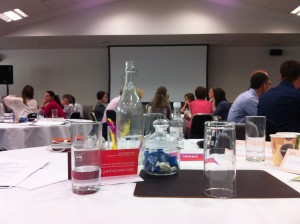 Andrzej and I then led a working session where the delegates were asked this question:
Andrzej and I then led a working session where the delegates were asked this question: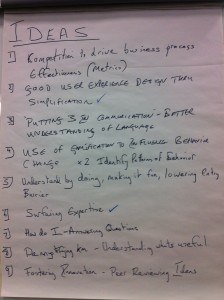 converts; others saw no role. But when asked to note down their top ideas this is what emerged:
converts; others saw no role. But when asked to note down their top ideas this is what emerged: